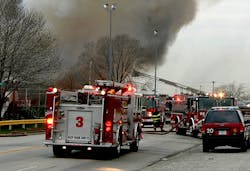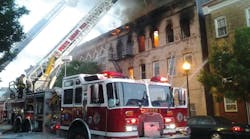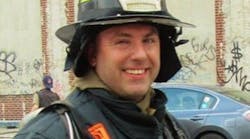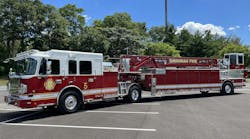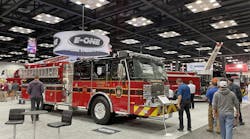The column of heavy black smoke you see in the sky as you are responding first-due to a report of a commercial building fire, sets your mind in motion. Checking your PPE, giving instructions to your crew, making mental notes to be sure and take the thermal imager and not forget your gloves--all this races through your mind as your rig rounds the corner and you can now see the front of the building pumping smoke and flames.
While you start thinking about size-up, radio reports, making a quick 360 and getting the crew into action, one of your most important initial arrival concerns is where you are going to park the rig.
If you decide to lay in a supply line, one heads-up move would be to pull past the building. This gives you a quick view of three sides even before you dismount, and leaves the front of the building open for an aerial device. In some cases, you might want to position the rig to use the deck gun for a quick, high volume knock-down attack. If your rig was designed correctly, the gun should have a 360-degree field of fire. If it was not, the rig will need to be positioned so that the gun can reach the blaze.
With many departments using a forward lay of LDH supply hose, responding to multiple alarms and laying in, can quickly make a tight knot of apparatus and hose in front of the fire building, one that is practically impossible to untie, and with few apparatus located in the most advantageous position.
I'm of the opinion that while a forward lay can be a good method of providing rapid water for initial attack, any engines arriving on subsequent alarms should lay from the fire to the supply source.
This accomplishes two things.
First, it keeps equipment parked around a fire scene to a minimum. If you are not laying a line and need only the tools, fine, just park the rig out of the way.
Second, it puts the pump where it needs to be for control--at the water source. If the water system is marginal, a pumper on a hydrant will move big water more efficiently than a long length of hose that depends totally on system pressure. In a rural area where you have to draft, there is no choice--the engine must be at the water source.
Sometimes the middle of the street in front of the fire building is not the ideal location for an aerial device either. Rear mounted ladders can gain an extra 10 to 20 feet of reach simply by backing in and placing the turntable as close to the building as possible.
With the rear of the unit facing the fire, placement of the ladder is not blocked by the cab or compartments. And, in the case of aerial towers, parking across the street when possible, will enable the basket to reach ground level if needed for hard-hitting, low angle attack.
In residential areas, the best option might be for the aerial device to back up the driveway, placing the rig closer to the building which helps make sure that you don't run out of ladder when contemplating roof work.
With EMS units, probably the worse position you can park is on the street, facing the fire. This is simply because there will be limited options if a quick exit with an injured firefighter or fire victim needs to be made. There is no reason EMS rigs can't be carefully backed into the scene, and placed so the driver always has a path open to leave the scene in a hurry.
To position your rig properly and safely at a rapidly developing incident, nothing beats knowing your district, knowing from where you plan to get your water and a driver who knows the rig's capabilities and the best way to utilize them.
It takes practice, but keep in mind that the quickest way to twist the fire scene into an operational disaster is a rig parked in the wrong place.
I always try to not let it be mine. It shouldn't be yours either.
